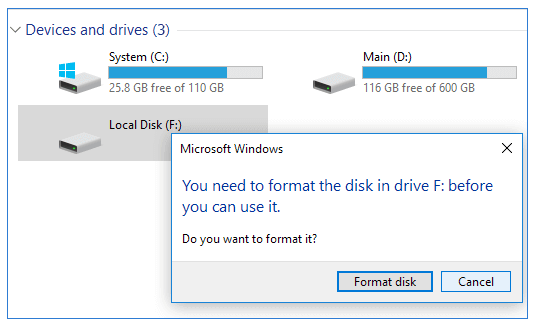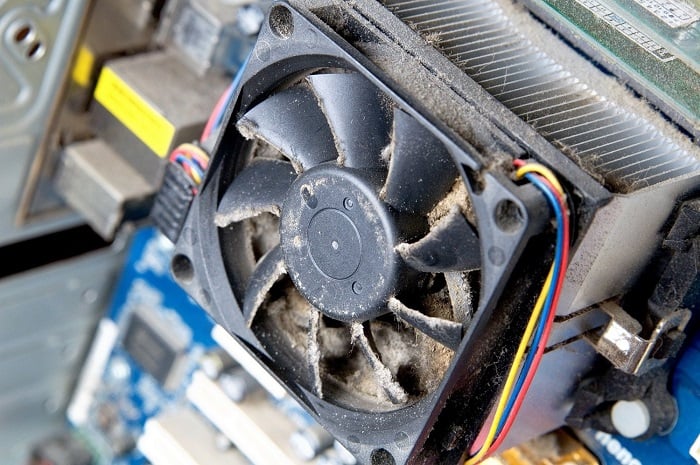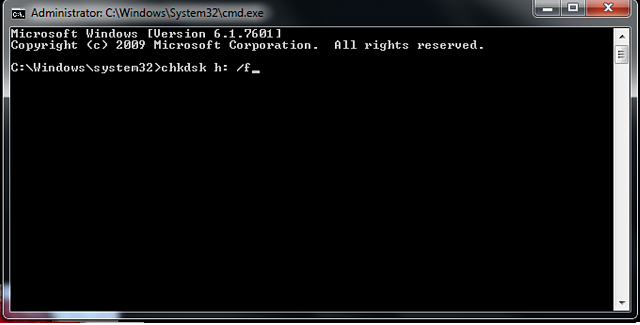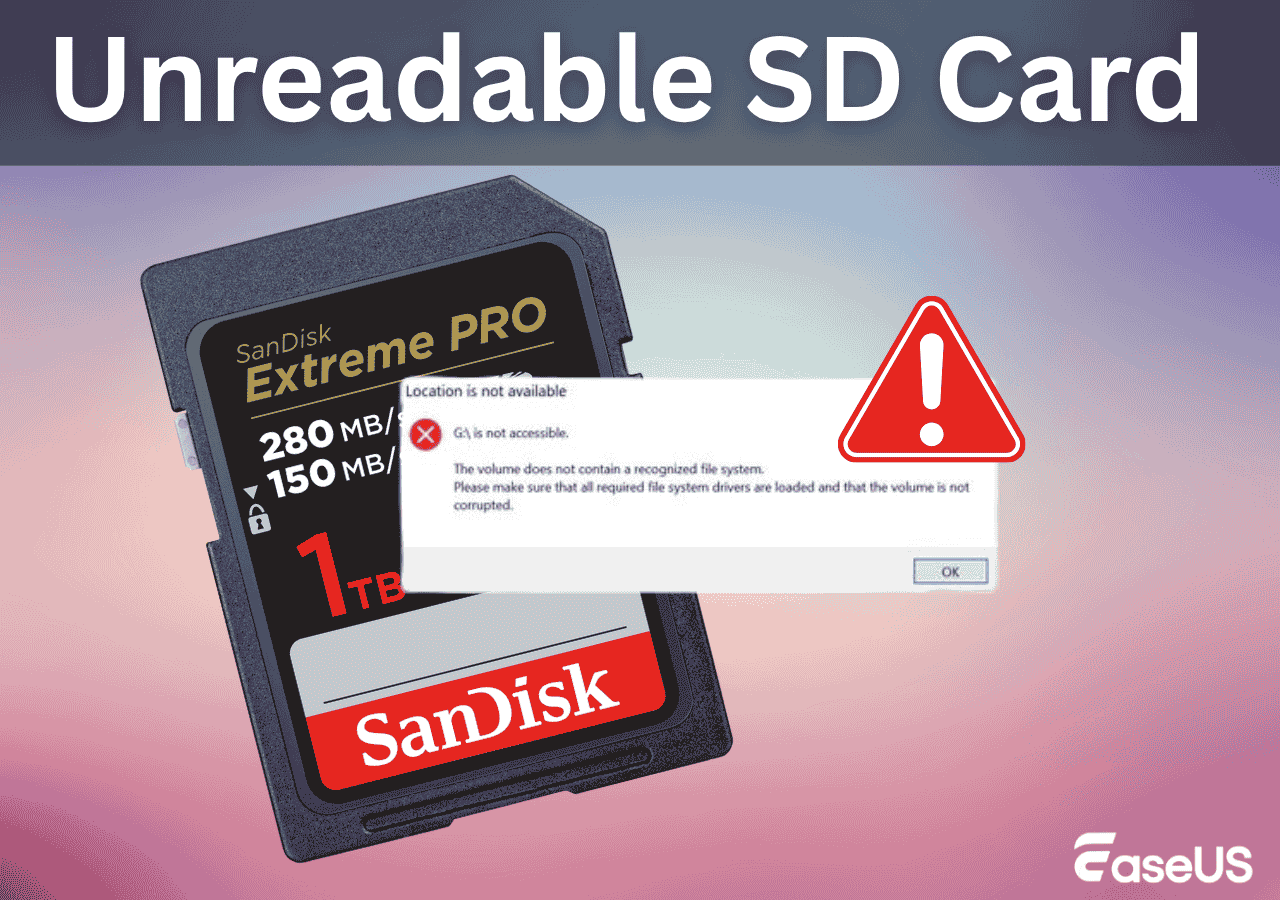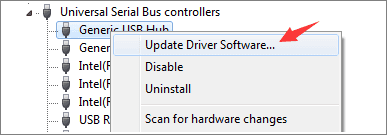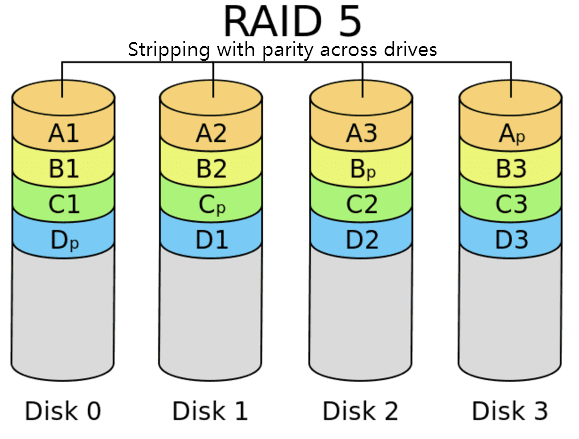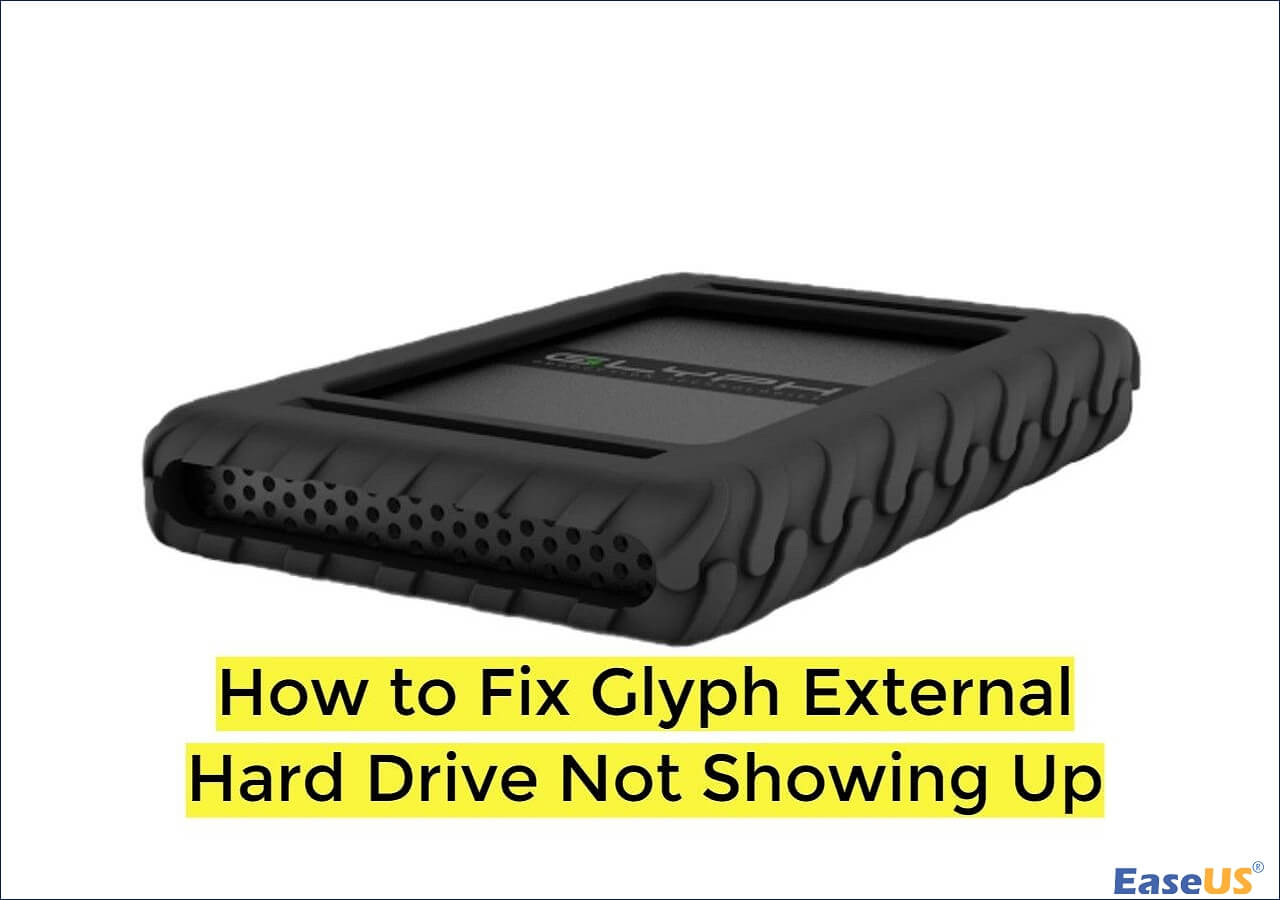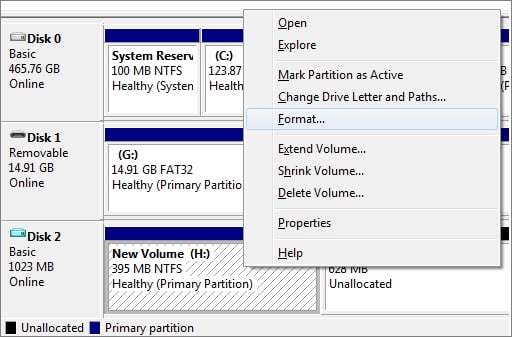-
![]() Fixe Maxtor External Hard Drive Not Working/Recognized Without Data Loss
Fixe Maxtor External Hard Drive Not Working/Recognized Without Data Loss January 13,2026
January 13,2026 6 min read
6 min read -
![]() How to Fix Overheated Hard Drive and Recover Data [Symptoms, Causes & Fixes]
How to Fix Overheated Hard Drive and Recover Data [Symptoms, Causes & Fixes] January 13,2026
January 13,2026 6 min read
6 min read -
![]()
-
![]() Unreadable SD Card: Ultimate Guide to Fix & Recover Data
Unreadable SD Card: Ultimate Guide to Fix & Recover Data January 13,2026
January 13,2026 6 min read
6 min read -
![]() Fix the Error that Memory Card Not Show Up or Detected in Mobile/PC
Fix the Error that Memory Card Not Show Up or Detected in Mobile/PC January 13,2026
January 13,2026 6 min read
6 min read -
![]()
-
![]() How ro Fix Glyph External Hard Drive Not Showing Up
How ro Fix Glyph External Hard Drive Not Showing Up January 13,2026
January 13,2026 6 min read
6 min read -
![]() xD-Picture Card Recovery: How to Recover Lost Files (Photos/Videos)
xD-Picture Card Recovery: How to Recover Lost Files (Photos/Videos) January 13,2026
January 13,2026 6 min read
6 min read -
![]() SD Card Showing Wrong Size: Restore SD Card Full Capacity
SD Card Showing Wrong Size: Restore SD Card Full Capacity January 13,2026
January 13,2026 6 min read
6 min read -
![]() How to Recover Permanently Deleted Files from Google Drive [4 Proven Ways]
How to Recover Permanently Deleted Files from Google Drive [4 Proven Ways] January 13,2026
January 13,2026 6 min read
6 min read
PAGE CONTENT:
Crucial SSD Not Detected on Windows Desktop
If your Crucial SSD not detected on Windows and you are searching for solutions, then you are at the right place. In this post, we will discuss why this issue happens and some best working solutions to fix this issue. Before getting into the solution part, first, let's understand why this issue occurs.
The reason behind the SSD not showing up on Windows 10 or 11 can be different like:
- 🔌Faulty connection
- ❎Outdated SSD firmware
- 💽Damaged SSD
- ❌Incorrect BIOS settings
- 🗂️The missing drive letter of the SSD partition
- 💻Disk initialization or partition issue.
Recover Data from Crucial SSD with SSD Recovery Software
Before fixing Crucial SSD not detected issues on Windows, you'd better create an SSD image and recover data from it. A data recovery tool is really essential to recover accidental data deletion or recover data from formatted SSD without taking backup while fixing the SSD detection issue on your Windows PC. In such cases, you can quickly recover your essential data with the help of a powerful data recovery tool.
We recommend using one of the most reliable data recovery tools, EaseUS Data Recovery Wizard. EaseUS Data Recovery Wizard is a robust and reliable data recovery tool. This can recover data loss from accidental deletion, formatting, partition loss, and virus attack from PC, USB drives, SSD, SD cards, and cameras. You can download a trial version for Windows/Mac with the following buttons:
Let's discuss more about its features and how it works, and learn more about this one-stop solution tool for data recovery with a high success rate. This all-in-one data recovery tool comes with several features:
- Deleted File Recovery: This tool can quickly recover deleted files from SSD within no time, including photos, audio, videos, emails, and documents.
- Formatted Recovery: It can effortlessly recover formatted hard drives, HDDs, SSDs, memory cards, USB drives, and pen drives.
- Raw Drives Recovery: EaseUS Data Recovery Wizard can scan for all recoverable files from inaccessible storage devices and efficiently recover all essential data.
- Damaged Hard drive recovery: Want to recover your essential data from a damaged or nonresponding hard drive? If yes, EaseUS Data Recovery Wizard can do it for you. This tool's advanced hard disk repair feature can quickly recover files from your damaged hard drive.
To understand how this tool works and how you can recover files, follow the below steps.
Step 1. Scan the SSD
Open EaseUS Data Recovery Wizard, select the SSD where you lost data, and click the "Search for Lost Data" button.
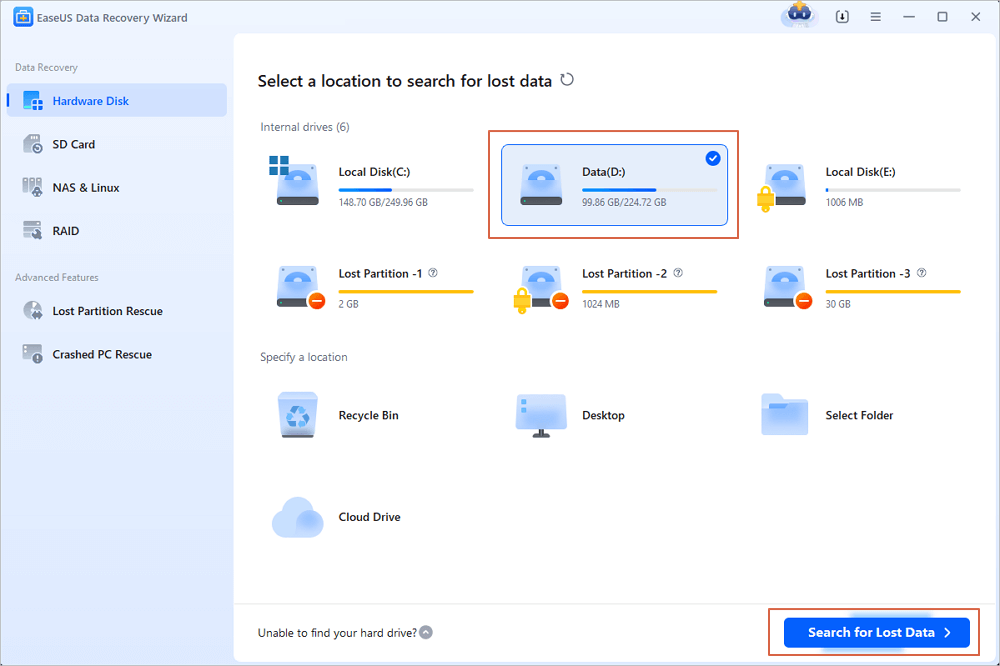
Step 2. View the results
When the scanning finishes, find lost SSD data by using the "Filter" and "Search" options after checking the "Deleted Files" and "Other Lost Files" folders.
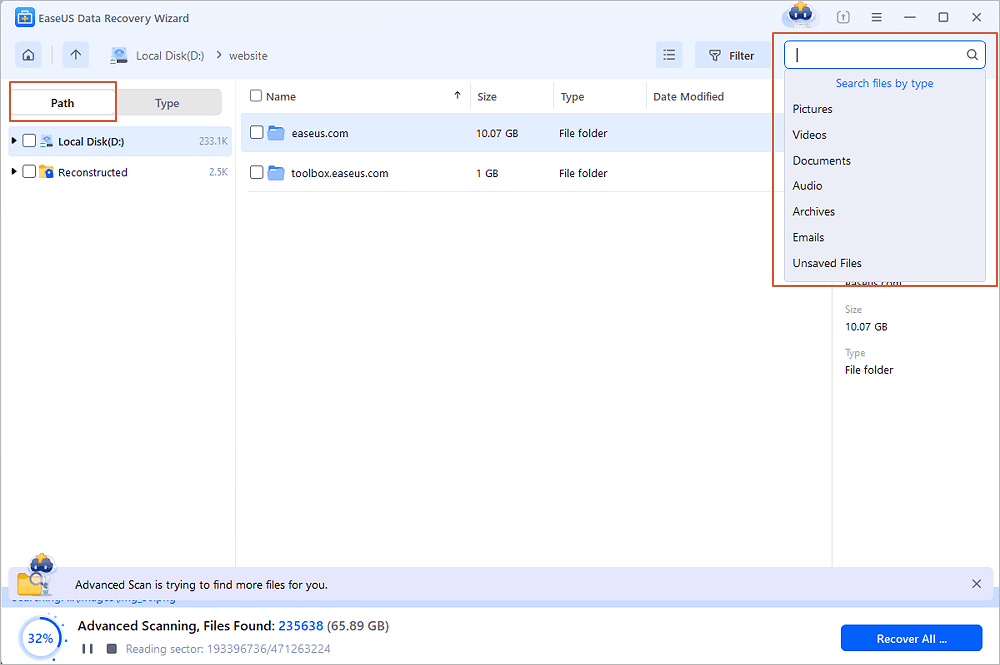
Step 3. Recover SSD files
Select desired data and click the "Recover" button to get back lost SSD files.
💡Tip: You can restore data on the local disks, external hard drives, and also the cloud storage.
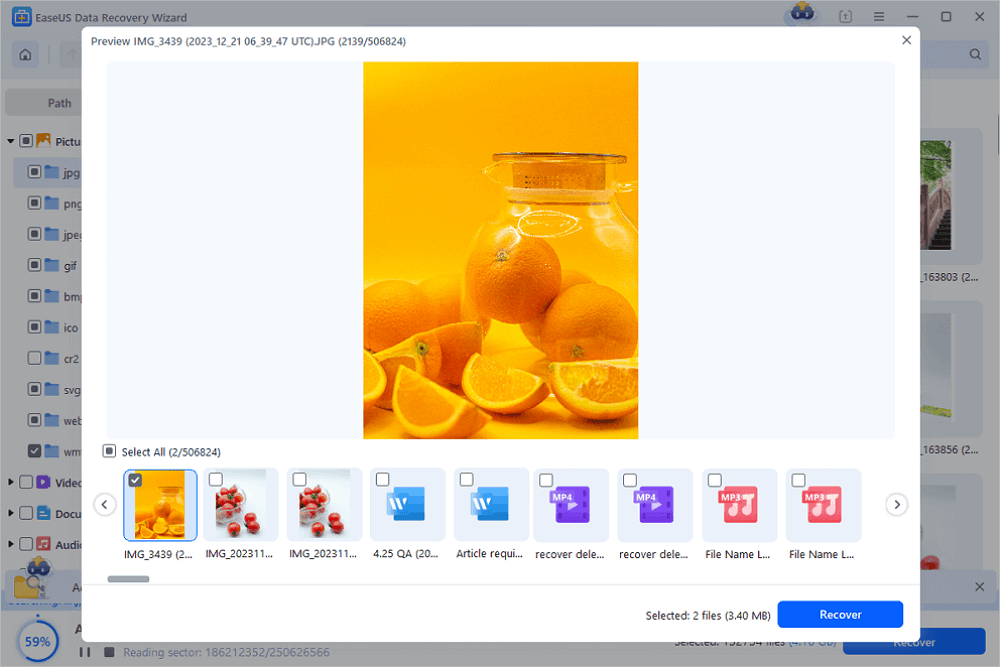
Here we have to find six different solutions to fix the Crucial SSD not detected in the next part of the post, so read the post till the end.
How to Fix Crucial SSD Not Detected | 6 Methods
Regarding how to fix Crucial SSD not detected on Windows, here we will give you the six best methods, along with a video clip. We suggest you watch the video clip and solutions correctly and follow the exact things to resolve this issue on your PC.
- 00:15 Method 1. Assign Drive Letter
- 01:05 Method 2. Initialize Disk
- 01:35 Method 3. Corrupted File System
- 02:38 Method 4. Windows Driver Issue

Method 1. Check Crucial SSD Connection Issues
When your Crucial SSD is not showing or detecting on Windows, first check whether the SSD is properly connected. Ensure that the SSD USB cable is plugged into the correct port. If the cable connection is ok, there may be a chance of any faulty hardware you need to fix or replace.
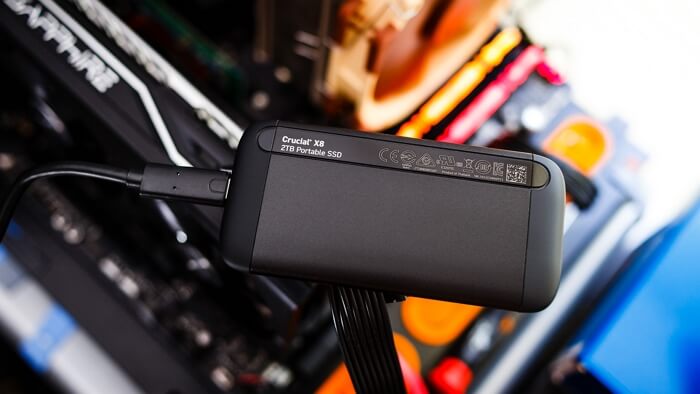
Method 2. Fix Crucial SSD Not Detected Issue in BIOS
Sometimes Crucial SSD is not detecting on Windows because the system BIOS is detecting the SSD. This usually happens due to incorrect configuration of BIOS settings. For instance, if the SATA controller mode is set to IDE, the system may not communicate with the SSD correctly. In such a case, you must set the controller mode to AHCI. To configure the SSD properly, follow the below steps.
Step 1. To enter BIOS setup, restart your computer, press the F2 key or others like F10 (depending on your computer manufacturer) during startup, and press the enter key frequently.
Step 2. Now navigate to the Storage configuration section of the BIOS settings. Now find out the setting of SATA controller mode and change it from IDE to AHCI.

Step 3. Now press F10 to save your SATA Controller Mode Option changes and exit the BIOS setup. The PC will restart automatically. Now check whether your SSD is recognized or not. If this method works, don't forget to share this passage with more users!
Method 3. Update Crucial SSD Driver on Windows
Crucial SSD is not detected on Windows issue might be happening because of outdated SSD drivers. When you connect the SSD to your computer, the operating system must communicate with the SSD driver. If the SSD driver is outdated or missing, it might not recognize the SDD on your Windows PC. So makes sure you are using the latest SSD driver on your PC. If it's outdated, then update it immediately. To update the SSD driver, follow the below steps.
Step 1. Please find your brand's latest version of its supported SSD drive from its official website. Here we will go with the Crucial SSD official website and download the latest version of the SSD.
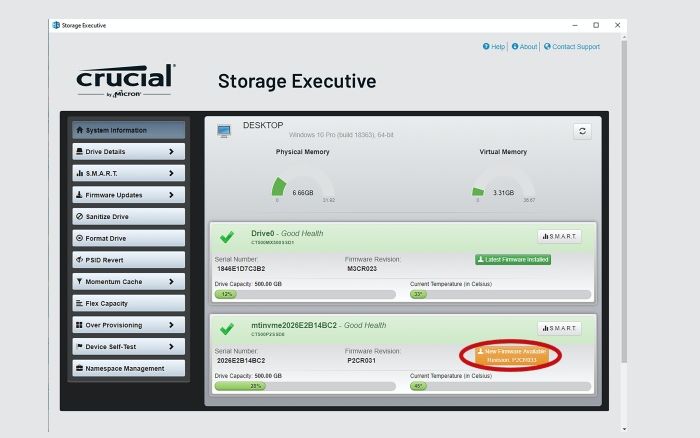
Step 2. Install the driver on your Windows PC and restart your system. After installing the updated SSD driver, check.
You may want to know more about how to update drivers on Windows 11:

How to Update Drivers on Windows 11
Are you wondering how to update drivers on Windows 11? This article will guide you on how to use and fix your drivers. Read more >>
Method 4. Initialize Your New Crucial SSD
It's important to initialize the new SSD for Windows to recognize it as a usable storage device. A new SSD will not recognize by file explorer or disk management utility until you initialize it manually, and you may get a notice "You must initialize a disk before logical disk manager can access it". So it's necessary to initialize the SSD and create a partition before using it. Follow the below steps to initialize a new SSD to fix the SSD not showing on the Windows issue.
Step 1. Press the Windows + X keys and select Disk Management to launch it.
Step 2. Now in the Disk Management window, find out the new SSD drive that is not showing up. If the SSD is listed as Not Initialized, right-click on the drive and select Initialize Disk.

Step 3. Choose the partition style MBR or GPT as per your requirement for your SSD and click OK to Initialize the SSD.
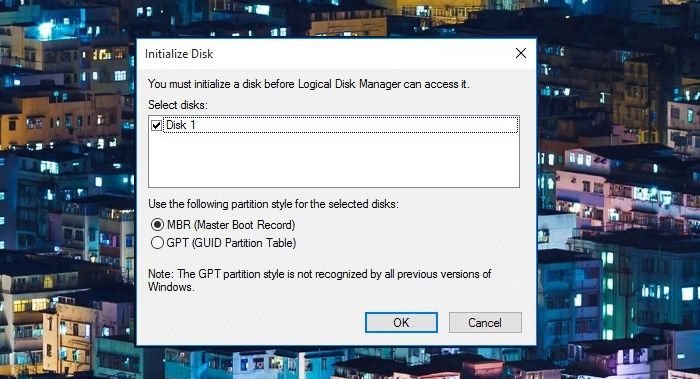
Step 4. After initializing the SSD successfully, you need to create and format a new partition. Right-click the unallocated space on the SSD and select "New Simple Volume".
Step 5. Follow the instructions on the screen to create and format a new partition. After the partition is created and formatted, restart your PC and see if the SSD is showing. If your problem is fixed, don't hesitate to share these methods with more users!
Method 5. Run Hardware and Devices Troubleshooter
Window's inbuilt troubleshooting utility can detect and resolve issues like SSD not showing up. To run the hardware and devices troubleshooter, follow the below steps.
Step 1. Open Command Prompt with admin privileges.
Step 2. Type msdt.exe -id DeviceDiagnostic and press the Enter key.

Step 3. Select Hardware and Devices. Then click on Run the troubleshooter.
Step 4. Windows may take several minutes to detect and fix the issue, so have patience.
Method 6. Format Crucial SSD
If none of the above methods works for you, then formatting the SSD is your last option. This method needs extra attention because formatting will erase all the data from the drive, so back up all important files before starting this process. Follow the below steps to format the SSD's drive letter.
Step 1. Press the Windows + X keys and select disk management to launch it.
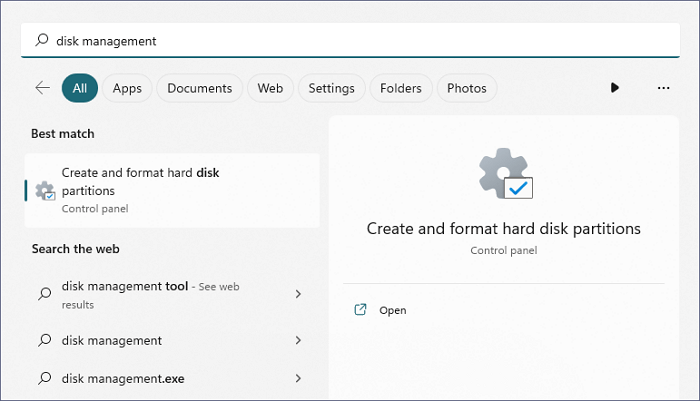
Step 2. Locate the SSD you want to format, right-click, and select Format.
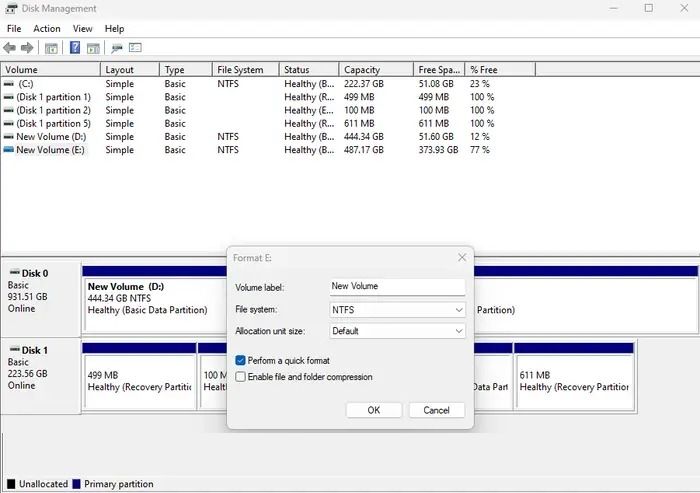
Step 3. Select the File System (NTFS) and specify the Allocation Unit Size (4096). Then check and perform a quick format. Now click OK to format the SSD.
Now you clearly understand how to fix Crucial SSD not detected in Windows. If you are satisfied with all these working methods, feel free to share this page on your associated social media pages to help others resolve this issue effectively; thanks.
Summary
In this post, we have discussed six effective and working methods to fix the Crucial SSD not detected on Windows PC. Try all these methods and see which one works better for you. We always recommend using the EaseUS Data Recovery Wizard to recover data if any accidental data loss or corruption happens during this process.
Crucial SSD Not Detected FAQs
In this part, we will answer frequently asked questions that may help you immensely. Read this section carefully to clarify your other doubts regarding this topic.
1. How to fix Crucial M.2 SSD not recognized?
If you encounter an issue like Crucial M.2 SSD not recognized, check whether your system has the latest BIOS installed. Also, verify in your system BIOS or UEFI has the ports enabled.
2. Why was my Crucial SSD not detected on the Windows desktop?
Your Crucial SSD was not detected on the Windows desktop because of several reasons like
- The drive is not enabled in the BIOS.
- Serial ATA drivers are not correctly installed.
- Faulty or unplugged data cable.
- Faulty SSD.
3. How can the Crucial MX500 not detected on a Mac computer be fixed?
Here is what you can do:
- Check the physical SSD connections first. If it's not detected, reset your Mac's System Management Controller (SMC).
- Use Disk Utility to detect and repair the SSD.
- If undetectable in Finder, check System Information. Reformat the SSD if necessary, or update macOS.
- If all fails, contact Crucial's customer service.
4. Can I recover deleted files from Crucial SSD?
Yes, you can quickly recover deleted files from Crucial SSD with the help of any robust data recovery tool. We recommend using EaseUS Data Recovery Wizard for safe and fast data recovery.
Was this page helpful?
-
Daisy is the Senior editor of the writing team for EaseUS. She has been working at EaseUS for over ten years, starting as a technical writer and moving on to being a team leader of the content group. As a professional author for over ten years, she writes a lot to help people overcome their tech troubles.…
-
Dany is an editor of EaseUS who lives and works in Chengdu, China. She focuses on writing articles about data recovery on Mac devices and PCs. She is devoted to improving her writing skills and enriching her professional knowledge. Dany also enjoys reading detective novels in her spare time. …

20+
Years of experience

160+
Countries and regions

72 Million+
Downloads

4.9 +
Trustpilot Score


Free Data
Recovery Software
Recover data up to 2GB for free!

